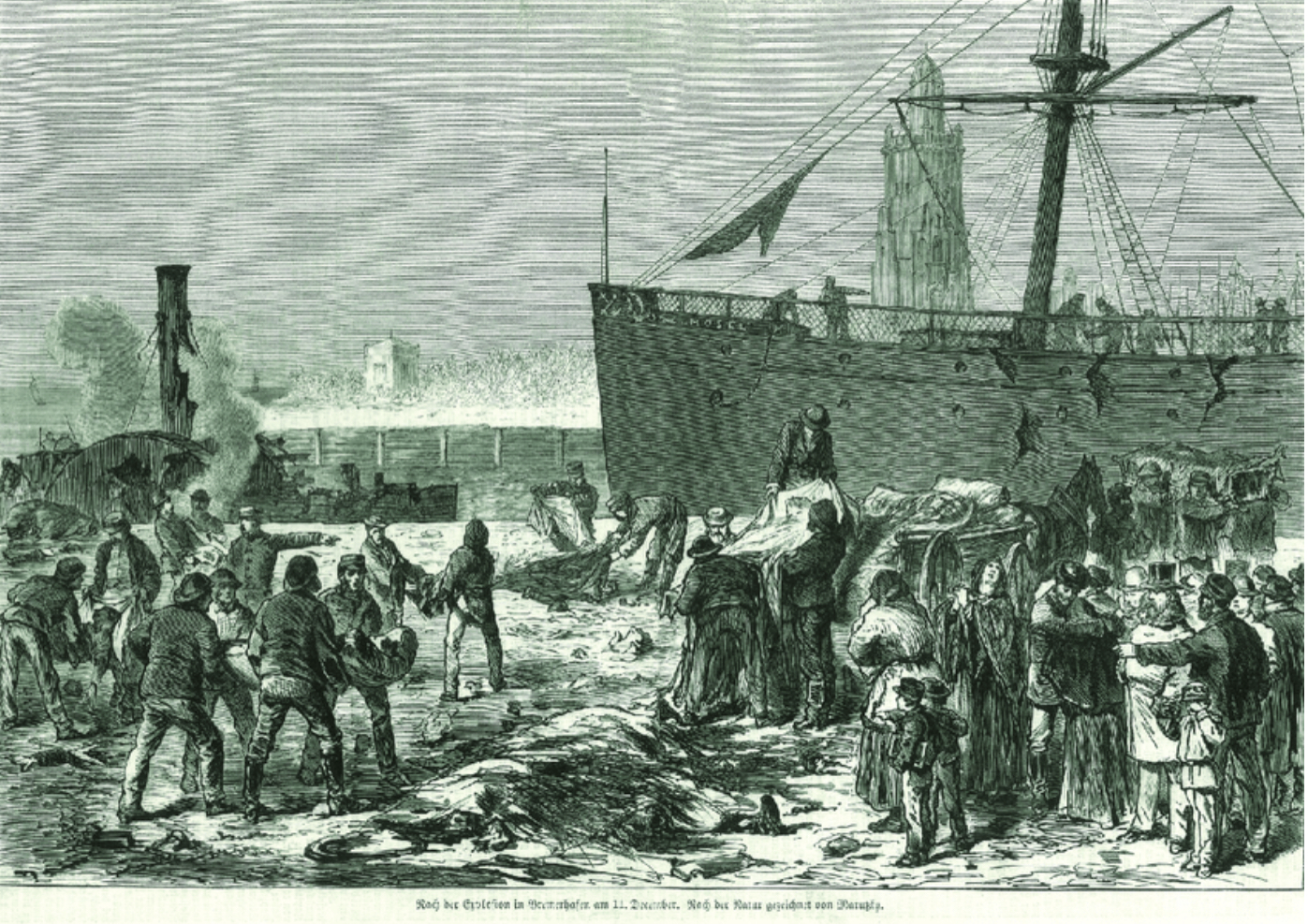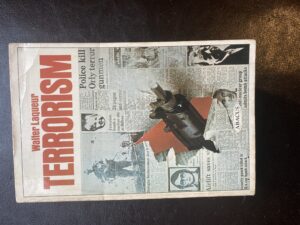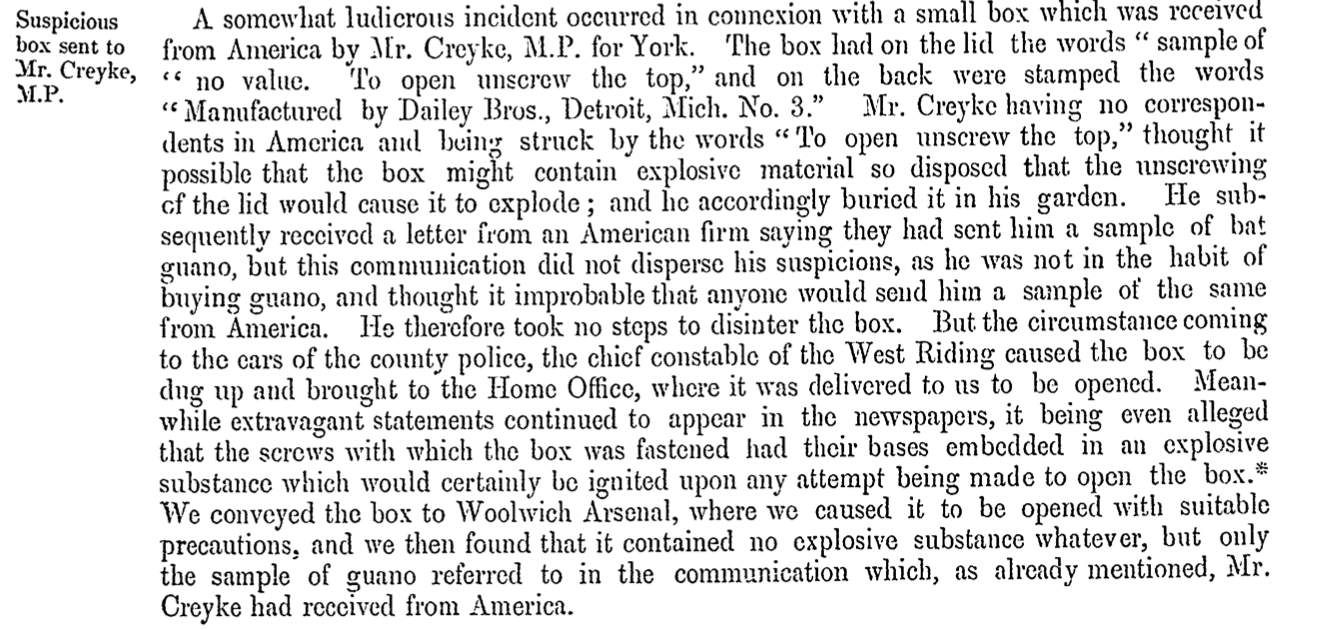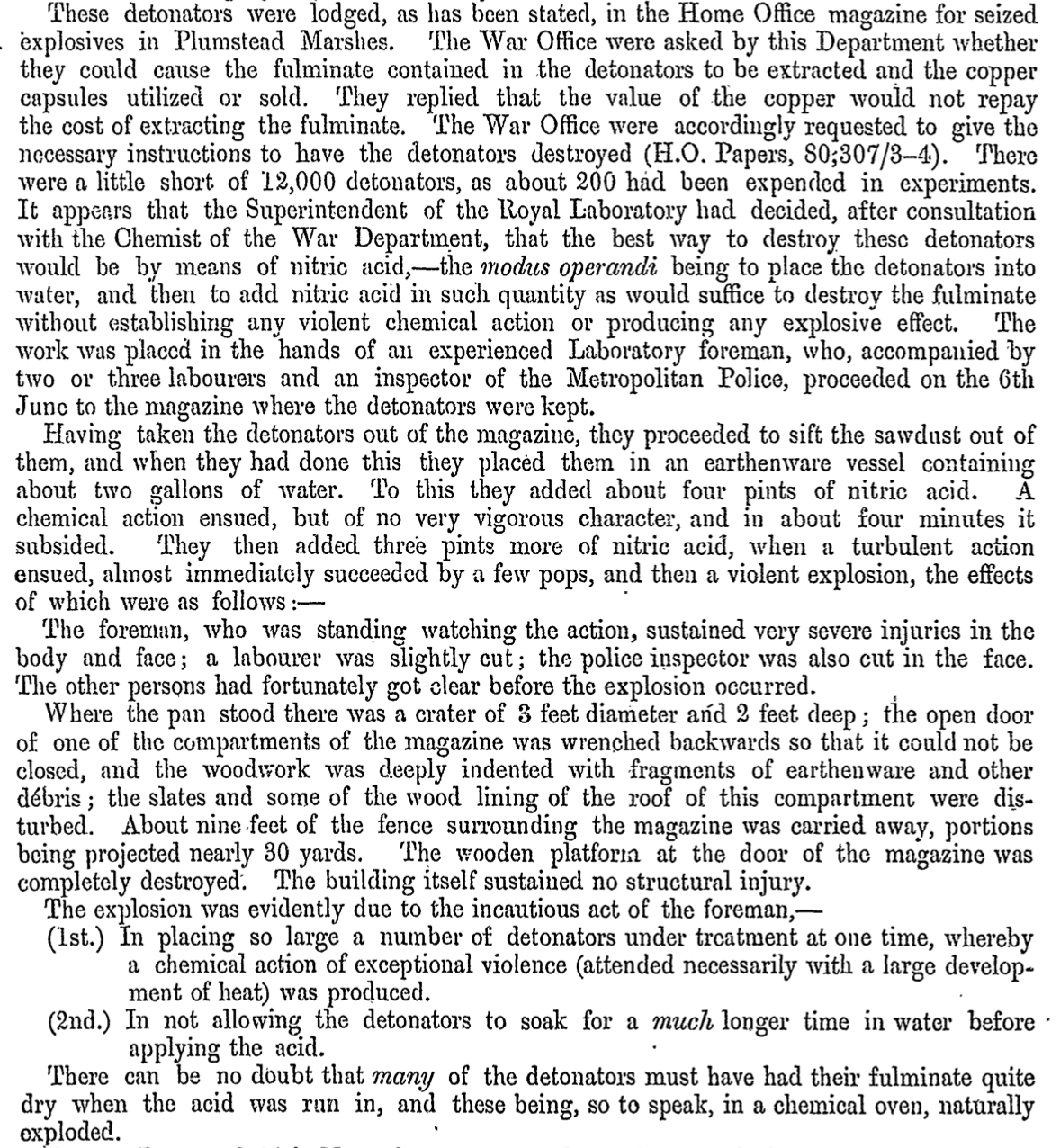A few years ago I wrote a blog post about an IED that exploded prematurely at Bremerhaven docks on 11 December 1875. That post is at this link here – Crime of the Century. Please re-read that report before reading on here. At the time I had somewhat incomplete information but now I have found more material including a report, written soon after the incident by Col (then Major) Majendie that has come into my hands and adds some fascinating detail. This is good Weapons Technical Intelligence from our esteemed Colonel Majendie. Majendie was the lead explosive expert in the Home Office and the father of modern British EOD and IED incident investigation. He had access to German police reports suggesting the following:
- The explosive used was a Nitro-glycerine based dynamite, called “Lithofracteur” – nitro-glycerine mixed into kieselguhr, sawdust, charcoal and bran . This, Thomas (aka, Keith, aka Garcie) had purchased in March 1875 .
- Keith had actually attempted to blow up cargo ships on one or two previous translatlantic crossings, but the initiation mechanism had failed. It seems likely that the Bremerhaven incident was the second or third attempt.
- The large crate that the device was hidden in was dropped but it probably wasn’t the impact of the drop on the sensitive dynamite to explode that caused the explosion.
- The complex timing and initiation contraption, designed by Keith but manufactured by German clock engineers , was not quite manufactured as per the instructions – because Keith’s “cover story” to the manufacturers provided a set of circumstances that didn’t quite make sense. Part of the contraption had levers which caused the action on the detonator at the right time. These levers were held in place with springs. The design included a spring detent to hold the levers in place but because Keith had told the manufacturers that the levers were to cut silk threads while fitted to a bench in a factory, the manufacturers saw no need for this detent and left the spring out.
- Thus, the levers were able to move under external force on the whole mechanism. The force of the crate dropping on the stone dockside was not enough to cause the explosive to function – this form of dynamite is not that sensitive in most cases. But the assessment is that the force was enough to overcome the striker springs in the timed initiation mechanism even though it wasn’t technically “armed” at that point.
- So the premature explosion of the IED occurred because the perpetrator was so secretive about the use of the mechanism that the efficient German engineers manufacturing it thought it was a redundant part so omitted it without telling Keith.
Majendie also reports on the complex insurance negotiations that Keith engaged in with the insurers Baring Brothers and others regarding the insurance of the box, which was his ultimate purpose to defraud. The report by Majendie then suggests a deeper engagement in the investigation. Separate from the German police reports furnished by the British consul in Bremherhaven, it appears that Majendie and his scientific adviser Dr Dupre obtained a diagram based on a drawing by the clockwork engineer Fuchs of the timing and initiation mechanism. I think this was a copy of the diagram shown in this excellent report. This report even includes a picture of replica of the mechanism made by the original maker. Fuchs, the clock engineer made a bit of hay after the explosion and made duplicates of his clockwork mechanism and sold them to a number of museums. There is a vagueness about the source of this diagram in Majendie’s report which I find suspicious and deliberate. Furthermore it is clear that there was some form of very rapid international investigation which Majendie refers to obliquely. Although Majendie doesn’t mention it, I think this will have been an international investigation undertaken by the famous Pinkerton’s agency, probably at the behest of the insurance companies involved. Majendie’s report also suggests to me that Dr Dupre, the scientist, was working perhaps secretly on a mission Germany to gather more intelligence on the operation. It certainly appears he met Fuchs, the clockmaker. A secret IED intelligence operation, no less. Certainly Majendie seems to have full details of negotiations the perpetrator had with insurers so I suspect he was provided with a copy of the Pinkerton report on their investigation.
It is suggested that Thomas/Keith may have had a role in other curious incidents and missing ships, perhaps in a series of insurance frauds. This appears to have worried Majendie who undertook investigations of other cargoes that may have been sent by “Keith” including the investigation of the cargo on the ship “Salier” docked in Southampton. Majendie also conducted quite a range of experiments on the sensitivity of lithofracteur – but also complains of the salacious reports in the press which exaggerate the threats from explosives- comments from public figures who should know better, exacerbating his challenges in an unwanted manner and misunderstanding, misrepresenting or having no bearing on the technical issues. Plus ca change as Dr Dupre would say.
Here’s a pic of the bodies being removed from the dockside in Bremerhaven after the explosion:

The lessons from this incident, still today, after over 150 years are:
a. International cooperation on IED investigation is not new, and pays dividends.
b. The implicit secrecy of planning and preparing IEDs leads to unexpected pressures. These pressures often cause the operation to fail, or provide the perpetrator with unwanted or unexpected changes to the operation. A careful WTI investigator will consider these pressures in his analysis.
c. The obvious cause of an explosion isn’t always the case. Only careful examination of the components, or in this case the component diagram revealed the full nature of why it occurred when it occurred.
d. Close partnership between lead investigators and scientific advisers is essential as is the ability to carry out experiments to test theories.
e. IED incident investigations were pretty good 150 years ago.





